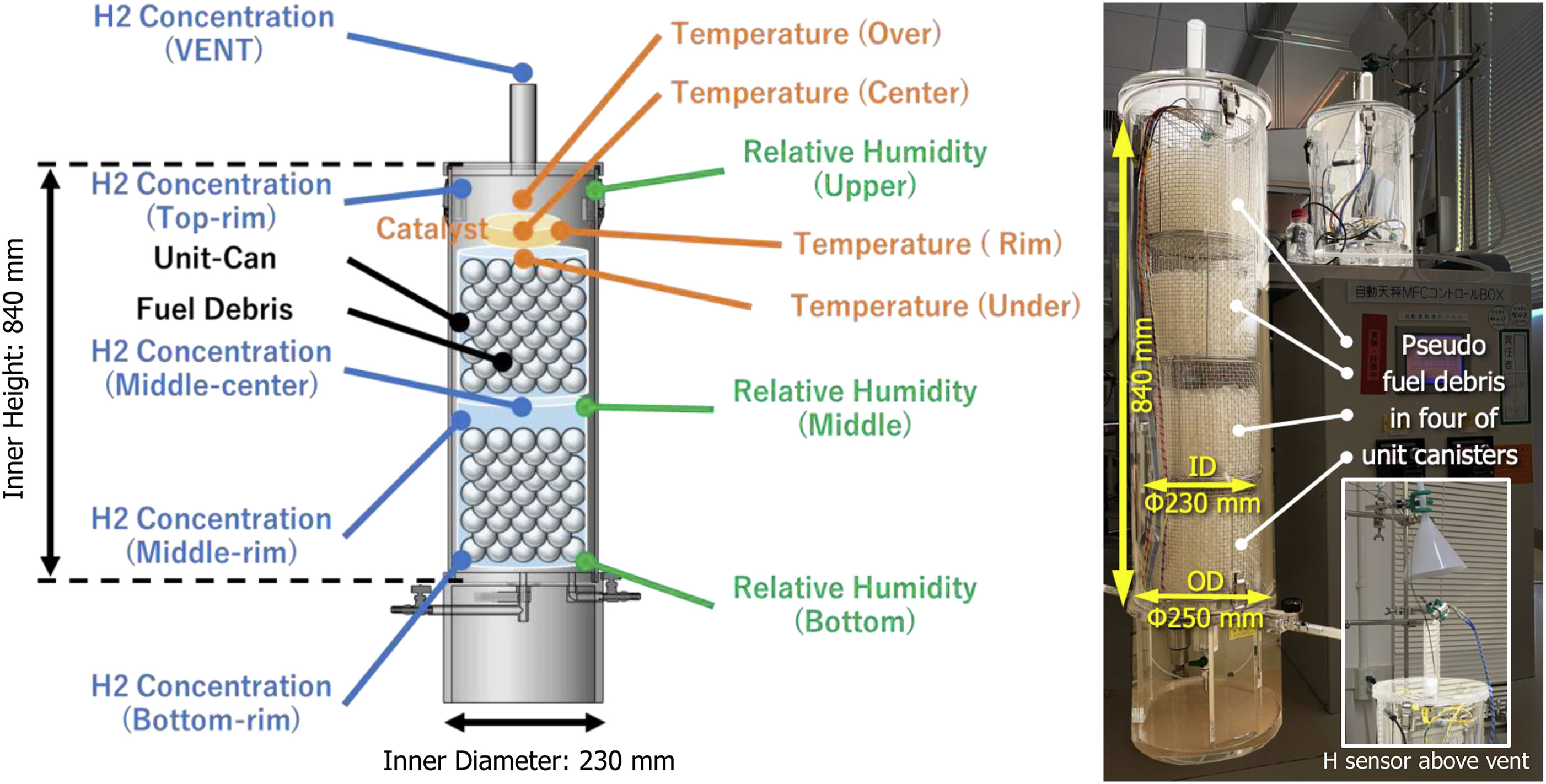Research on catalysts that contribute to the safe decommissioning of the Fukushima Daiichi Nuclear Power Plant by Prof. Hirohisa Tanaka was published in the International Journal of Hydrogen Energy.
Professor Hirohisa Tanaka of the Faculty of Engineering has published a paper on catalysts contributing to the safe decommissioning of the Fukushima Daiichi Nuclear Power Plant in the International Journal of Hydrogen Energy (Volume 141). This paper is the result of collaborative research conducted by the Japan Atomic Energy Agency, Daihatsu Motor Co., Ltd., Forschungszentrum Jülich GmbH (FZJ) in Germany, and the Hirohisa Tanaka Laboratory.
At the Fukushima Daiichi Nuclear Power Plant (1F), the earthquake and subsequent tsunami caused insufficient reactor cooling, leading to a catastrophic hydrogen explosion. Post-disaster cleanup, including decontamination of radioactive waste and prevention of the spread of contaminated water, has been a national challenge. The major remaining issue is the post-disposal of contaminated water and highly radioactive fuel debris. While multiple radionuclides have been removed from contaminated water using the Advanced Liquid Processing System (ALPS), water containing tritium has been treated and released into the ocean since August 2023. This contaminated water is continually being generated as rainwater and groundwater come into contact with the fuel debris remaining at the bottom of the reactor where the accident occurred.
Removing the fuel debris from the reactor is essential as a fundamental solution to prevent the accumulation of contaminated water. It is estimated that approximately 880 tons of fuel debris exists at the Fukushima Daiichi Nuclear Power Plant. Plans have been announced to divide this entire fuel debris into 70-100 kg pieces, seal them in approximately 10,000 fuel debris containers, and store them on the Fukushima Daiichi Nuclear Power Plant site for 30-50 years.
A major challenge here is the high radiation levels contained in the fuel debris, which cause water decomposition, generating hydrogen and oxygen within the containers. Tokyo Electric Power Company Holdings (TEPCO) estimates that the maximum amount of hydrogen generated within the containers is 1.1 L·h-1. This paper provides an overview of research into the safety of hydrogen generated in sealed containers, discusses the advantages and limitations of "passive hydrogen recombination catalysts (PARs)," which catalytically convert hydrogen back into water, and provides comprehensive guidelines for their effective use.
Journal name:International Journal of Hydrogen Energy
Article title:A proposal of hydrogen safety technology for decommissioning of the Fukushima Daiichi Nuclear Power Station
Author(s):Hirohisa Tanaka, Sogo Iwata, Tadasuke Yamamoto, Tomohito Nakayama, Shinya Uegaki, Tomoaki Kita, Atsuhiko Terada, Daiju Matsumura, Masashi Taniguchi, Ernst-Arndt Reinecke
DOI:https://doi.org/10.1016/j.ijhydene.2025.03.053



